Buying a new mountain bike is a really exciting time. But it’s important that you don’t get distracted and you buy the right bike that suits you.
Whether you are looking to buy your very first mountain bike or simply trying to get something a bit better than you already got, here are the things you need to consider for your smooth endeavor.
1. What’s Your Purpose?
What trails you are willing to ride? The various bike ergonomics play a vital role in providing you with a fun and desired experience for your riding purpose.
Hardtail Bike

Source: off.road.cc
The hardtail bike comes with front fork suspension shocks with no rear suspension. They are lighter, less complex, and built for maximum forward momentum and speed.
This is a popular choice for cross-country riders as the bike geometry is more inclined toward efficient climbing trails.
Full-suspension Bike
These have suspensions, both on the front and rear. They add comfort, and add control but are more expensive options due to high repair costs.
Full-suspension bikes are more capable of tackling trail obstacles like jumps and drop-offs and are built more sturdily for enduring shocks. Thus an ideal choice for downhill tracks.
Rigid Bike
These have no suspensions, either rear or front. Rigid bikes are a more user-friendly option if you are a total beginner or a commuter and are a splendid choice for on-pavement riding.
Bikepackers widely use rigid bikes as they are a viable choice for strapping cargo to its frame as they don’t compress under the heavy weight as a suspension frame does.
Electric Mountain Bike

Source: insideevs.com
E-mountain bikes are built with similar technology to traditional mountain bikes. They are equipped with a battery and motor designed to tackle increased range and cover more ground.
These are expensive and are prone to high maintenance costs. Visit this site to learn more about the complex and sophisticated components of electric mountain bikes.
2. Know Your Budget
Setting up a budget is important. Especially if you are on a tight budget, you should allow yourself a few extras, because it can feel like you are going to get stung when you have forgotten something you need.
Budget depends on how much you spend on your bike, whether it’s a hardtail, full-suspension, or rigid. For a sub $500 category, you often get bikes that are heavy with low to mid-quality parts.
They are also not typically designed to handle rough terrains but can be a good choice for complete beginners.
For a $500-$1000 ballpark, you will be getting a lightweight setup with an aluminum frame. This covers moderate suspension shocks, either front or both front and rear, and featured disc brakes with reliable performance.
Between the $1000-$2500 range, you can find increasingly capable mountain bikes for hardtails with quality components. You will also get a wide range of full-suspension options for downhill beginners.
At above $2500, hardtail and full-suspension get more modern geometry for the best performance. The weight begins to drop gradually with lightweight frames. Components offer high durability under tough conditions.
This range gives the best output for highly professional bikers who races downhill and enduro trails.
3. Get Your Size Right
Mountain bikes usually come in three standard sizes (S, M, L) which generally correlate to your height.
Some bike manufacturers provide frame size charts and measurements on their websites which we highly suggest having a look at. The frame sizes correspond with the following key indicators:
Effective Top Tube Length
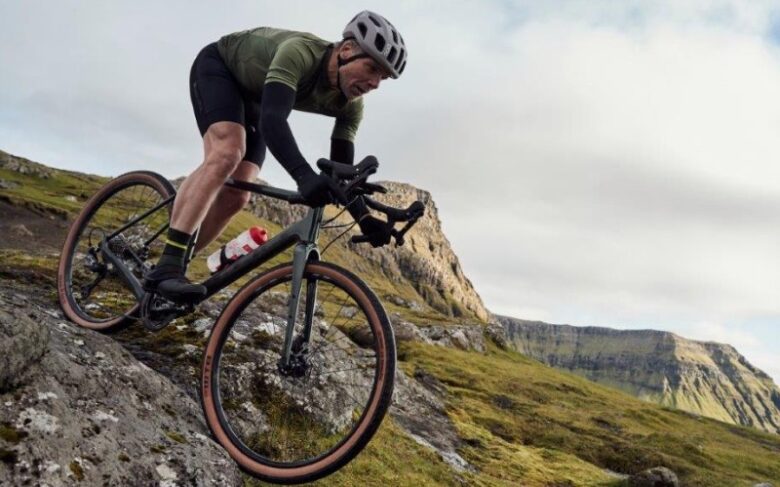
Source: guides.wiggle.co.uk
ETT is the horizontal distance between the centerline of both the head tube and seat post, regardless of any top tube shape/angle. This measurement provides a better idea of the clearance a bike will feel while you are seated on the saddle.
Reach
Reach is the horizontal measurement between the middle of the bottom bracket and the center of the head tube top.
Standover Height
This is the distance between the top tube and the ground. There should be enough clearance of about an inch or two above the top tube when you are standing upright flat-footed. Much higher clearance is dangerous because if you somehow hit the top tube by accident, you are likely to get injured.
Leg Inseam Height
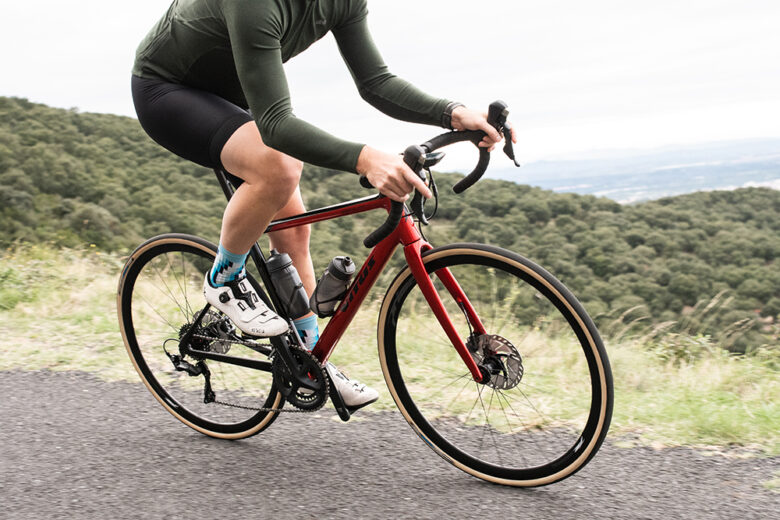
Source: guides.wiggle.co.uk
This height can easily be measured by standing straight up with a little gap between the legs and then measuring the distance between the legs from the crotch to the ground.
The mathematical formula for calculating the frame size is:
Bike type * Leg Inseam Height (cm) = Your Frame Size (cm)
For a mountain bike type, the value is 0.685.
Wheel Size
There are three wheel sizes where 29” or 29er wheels are the biggest but are on the heavier side. This size gives more momentum on rough terrains. 27.5” or 650b wheels are ideal for trail riding.
Over the years, 26” wheels have replaced both 29er and 27.5” wheels due to their availability. There are also plus-sized wheels available with bigger tires and wider rims, giving them more traction in muddy or snowy conditions.
4. Bike Accessories
Bike Helmet
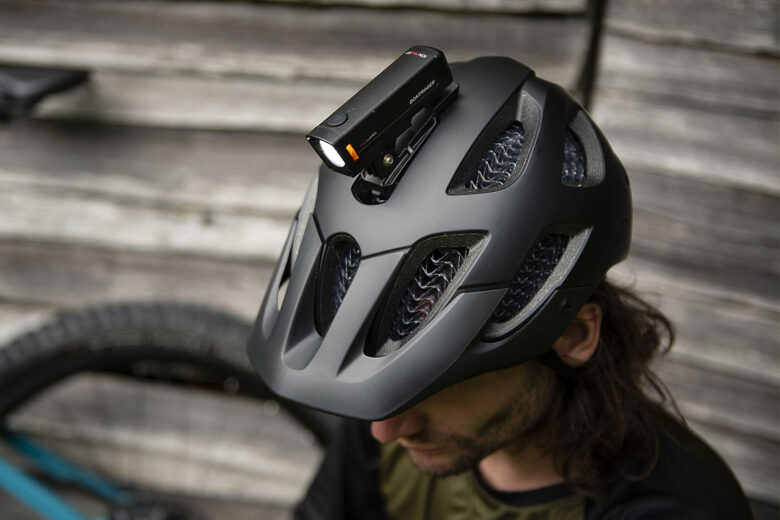
Source: dmarge.com
You are definitely going to need a helmet if you are hitting the road. Try to get the best helmet you can afford. We suggest buying bike helmets that are well ventilated and offer rear head coverage.
Pumper
Bike pump comes in various styles and sizes. The one you need depends on the type of your wheel inner tubes.
Frame pumps are a compact and go-to-go option for any mountain biker as they are easy to use and affordable.
Medium pumps are a minimalist version of a track pump. It comes in handy when you want your air pressure set just right.
Mini pumps are perfectly sized to clip onto your bike and also fit your jersey pockets.
CO2 pumps are costly and are for tubeless tires. Helps in quick inflation effortlessly.
Cycling Gloves
Cycling gloves help you soak up sweat, allowing you to maintain a tight grip on your handlebars during each ride. Especially needed when are caught up in rain and need proper friction between your hands and the handlebars.
Hydration Pack
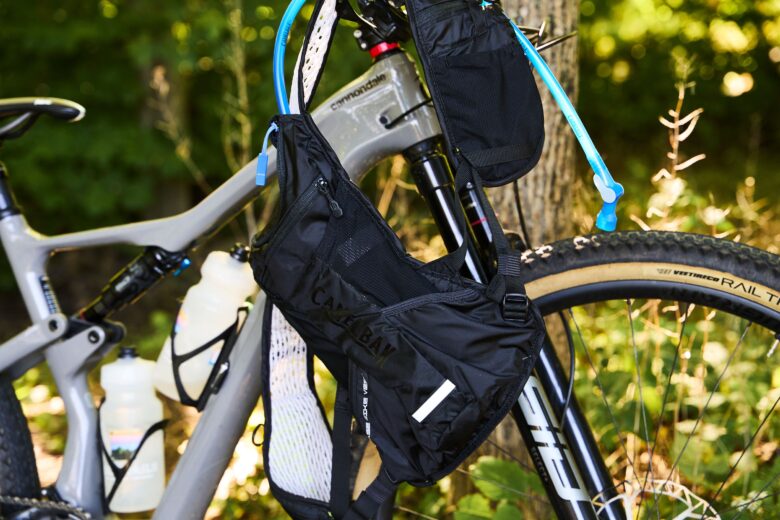
Source: bicycling.com
A water bottle or hydration pack is important when you are on a long trip. Running out of water mid-ride is not an ideal situation. A most common bottle holder is located on the top side of the downtube, which can be replaced.
Lights and Reflectors
A must-have accessory. Whichever option you go with- from pedal strips to rear LED lights, make sure people are aware of you on the road during dim lighting conditions.
Multi-tool Kit
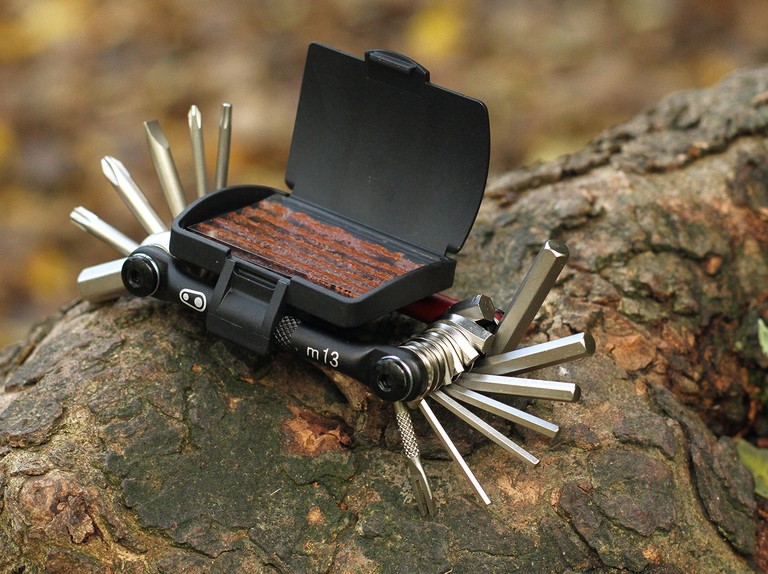
Source: bikeradar.com
You will need a lightweight multi-tool kit for any unavoidable situations like loosened bolt or brake tuning. A patch kit is also highly recommended for flat tires.
Final Words
Mountain biking comes with various health benefits. Do you want to buy your first bike? It will probably be the best one you ever made. We hope our above tips have helped you take your wise decision.
Don’t forget to take your bike out for a test drive before spending your bucks. Sit and see how it feels. Once you feel content, congratulations! You have your own two-wheeled companion!

